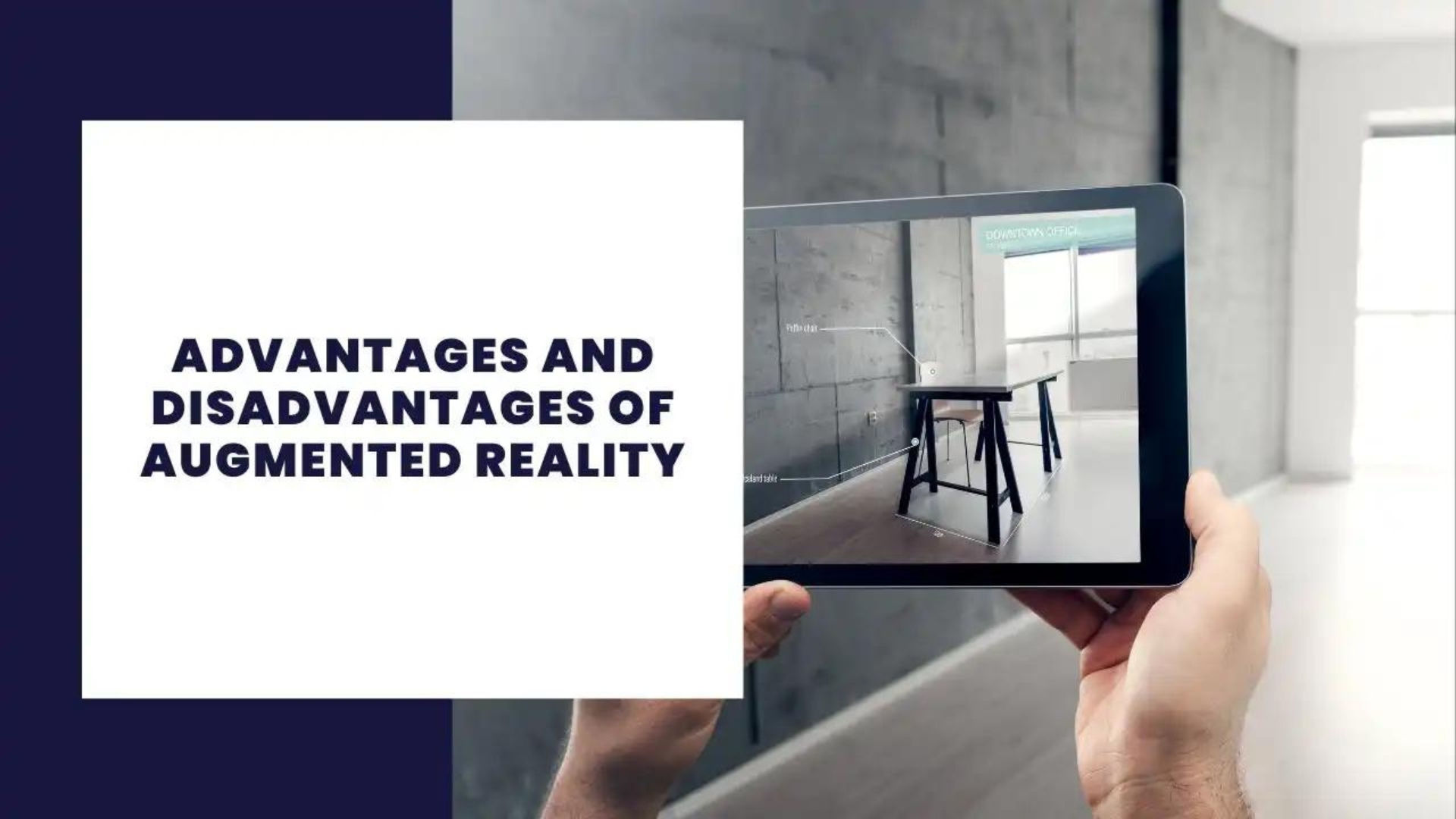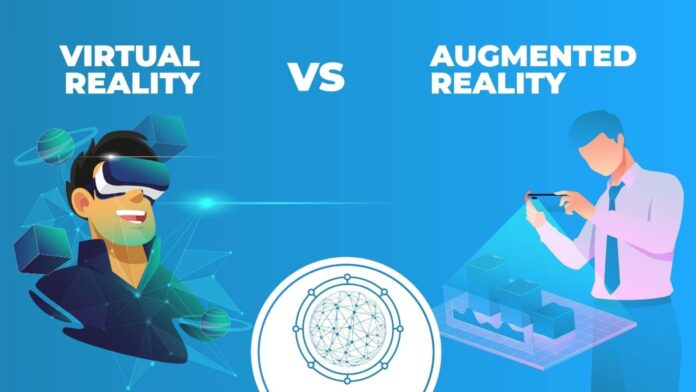Augmented Reality vs. Virtual Reality: Key Comparison. There are a lot of similarities and differences between augmented reality (AR) and virtual reality (VR), two technologies. While both can be utilized to provide immersive experiences, they differ significantly in their operation and the kinds of experiences that can be generated. The primary distinction between augmented and virtual reality is that the former augments the real world with virtual components, developing a new virtual environment for users to explore. Put another way, augmented reality incorporates digital data into an already physical experience, whereas virtual reality generates an entirely artificial one.
What is Augmented Reality?
Through digital information, augmented reality (AR) aims to augment the user’s perspective of the physical environment by superimposing virtual elements such as images, audio, video, and more onto the user’s field of view. Augmented reality (AR) enhances the environment by allowing virtual elements to interact with actual items to generate intended meanings. Virtual worlds that are realistic and educational coexist in augmented reality (AR), with the former supplying supplementary data about the latter.
In most cases, ordinary technology, notably smartphone cameras, can create an augmented reality. Because augmented reality systems determine things’ relative positions and orientations, they can superimpose virtual three-dimensional (3D) items and environments onto real-world objects in real-time according to their geometric relationships. Mobile phone technologies like GPS, 3G, 4G, and remote sensing often work in tandem with augmented reality nowadays. Various devices, such as augmented reality glasses, smartphone phones, and others, display the merged image.
Virtual dressing rooms, interior décor apps like IKEA mobile, virtual battlefields, and games like Nintendo’s Pokémon Go are all applications that use augmented reality systems. Snapchat filters are another example. In addition, marketing, as well as medical and healthcare applications, make extensive use of augmented reality.
What is Virtual Reality?

The term “virtual reality” (VR) refers to tools and techniques that may generate realistic 3D visual experiences for consumers. Virtual reality aims to immerse users in a massively replicated 3D digital world. Virtual reality (VR) systems use computer vision and advanced graphics to create 3D images and movies of real or imagined environments. These technologies recreate the size and spacing between 2D still pictures to add depth to photos and movies. Instead of just watching, the idea is to make you feel like you’re in a computer-generated digital scenario.
Users utilize VR headgear and gloves with computers to explore and manipulate 3D environments. VR headsets and controllers include customized lenses that let users naturally perceive and interact with virtual content. Modern VR devices exceed 3D. With their built-in tracking capabilities, users can experience virtual reality in real-time using all five senses. Video games and educational applications, including in-class training and virtual meetings, are some examples of VR’s entertainment, education, and business uses.
Augmented Reality vs. Virtual Reality
Although both augmented and virtual reality aim to present users with a 3D simulation, the two technologies are different and have different applications. The main difference between virtual reality (VR) and augmented reality (AR) is that VR aims to completely replace the real world, whereas AR works to augment the real world by superimposing digital information.
Furthermore, due to the immersive nature of VR, devices must obstruct users’ line of sight to display VR material, thereby isolating them from the actual world. Therefore, virtual reality (VR) is best experienced with specialized gear, like VR goggles or gloves. Concurrently, augmented reality (AR) can be effortlessly used in both two-dimensional (2D) and three-dimensional (3D) settings, like on a smartphone.
Advantages and Disadvantages of Augmented Reality

Augmented reality (AR) has pros and cons, like any technology. It’s often compared to virtual reality (VR), which lets users create new interactive experiences. Augmented reality (AR) is a great instructional tool because of its rich information and context. AR increases user experience, which may help people learn and become more self-aware. Individualized learning enhances learning. Augmented reality allows people to share their experiences in real-time.
The fact that augmented reality systems do not limit the capabilities of users’ devices is just one of many reasons they are popular. Smartphone users have more freedom with augmented reality, and AR marketers and developers have more opportunities without a head-mounted display. Point the camera at an object to view the augmented reality app’s effects. Creating realistic, high-resolution objects for premium experiences still requires substantial bandwidth.
A significant benefit is augmented reality’s widespread application in gaming, marketing, education, healthcare, training, learning, navigation, design, and entertainment apps like Snapchat, Google Lens, and IKEA Place. AR lacks privacy and security, which is a drawback. The concept of augmented reality may suffer.
Its many downsides include low adoption. Current 3D systems that generate and preserve 3D pictures, especially in real-time, limit augmented reality technology proliferation. Developing, launching, and maintaining augmented reality projects and apps is still difficult and costly. Remember that too much AR use can harm your health. Overexposure to AR can cause eye, weight, mental health, and other concerns.
Advantages and Disadvantages of Virtual Reality

Augmented Reality vs. Virtual Reality: Virtual reality has various benefits and has impacted many industries. VR creates a realistic world that lets people explore and experiment in an interactive artificial setting. VR provides a more immersive experience than augmented reality. For gamers and video viewers, it creates a new universe.
One of VR’s main benefits is safer, more comfortable, and more accessible learning and practice. This technology lets you practice dangerous real-world operations like surgery, flight, and combat without performing them. Virtual reality training cannot substitute real-world labor, which is a drawback. Even if a person excels at simulated tasks in 3D virtual reality, their real-world performance may differ.
Virtual reality devices are pricey; thus, most people won’t utilize them. VR goggles are expensive; therefore, not everyone can afford them. Although virtual reality technology has become cheaper, it is not widely used. Virtual reality systems are scarce due to low acceptability, limiting consumer choice. Many health issues must be addressed. More developments in virtual reality technology are needed to prevent temporary side effects like headaches, nausea, and impaired vision.
Rising escapism is another worry. Virtual reality enthusiasts soon ignored the natural world in favor of their virtual ones. Spending a long time in the virtual environment has interested individuals, leading them to use VR more often and isolate themselves.
Applications of Augmented Reality
Augmented reality apps enable users to do exciting things in their surroundings or connect virtual and real-life items and experiences. Augmented reality has several applications. Retail and advertising use AR extensively. AR can improve consumer experiences by presenting 3D product models and helping purchasers make better judgments. Augmented reality can direct customers to virtual retailers and hotels.
Users can improve remote design, virtually visit a house, get a better idea of how a sofa will fit in their home, or shop for furniture from home with their help. The printing and advertising sectors use augmented reality apps to superimpose digital 3D content over periodicals and newspapers to promote brands.
Besides AR ads, tourists can use AR programs for navigation, providing destination, direction, and sightseeing data. Options include previewing meals before ordering and lodging advice. Augmented reality allows virtual holidays. Augmented reality apps can help drivers navigate, label items, and get speed information. Jurassic World Alive, DogemonGo, Terra Virtua, and other blockchain-based augmented reality games are available. Real-time 3D game technology improves gaming experiences. Augmented reality improves virtual worlds, letting gamers accomplish real-life tasks.
Another use is remote collaboration. AR apps allow manufacturing and maintenance professionals to teach repair teams to mend and maintain equipment remotely. Augmented reality can improve staff training, patient diagnostics, incident planning, and monitoring. Regular users of fitness AR apps can track their heart rate and other vitals on screen while exercising. AR is also used in architecture and urban planning to visualize construction projects. Urban planning, redevelopment, and transportation use it.
Applications of Virtual Reality
Virtual reality apps immerse users in an artificial world. Such applications benefit several sectors. Most VR apps are for amusement. Virtual concerts, travel simulations, immersive video games, and 360-degree viewing are prominent examples. VR can display high-definition, three-dimensional interactive graphics, potentially a new digital advertising and marketing outlet.
Virtual reality makes distant workers feel like they’re in the same room, enhancing collaboration and meeting efficiency. It can help businesses brainstorm, test, and collaborate with partners before launch. Before building expensive prototypes, VR lets designers and engineers test car layouts and styles. VR has been used for therapy. Immersive virtual reality can replicate natural and real-time 3D worlds. VR can reduce pain by modifying neural connections to the brain, making it useful in social science, psychology, and therapy.
In recent years, virtual reality has outpaced traditional PTSD treatments. Augmented Reality vs. Virtual Reality: To treat autism, social issues, and phobias, virtual reality apps are now widely used. Due to social alienation, medical simulation training using virtual reality systems.
Virtual reality is used for teaching and education in many areas outside healthcare. The military simulates warfare and flying with VR. It sets up sports games and helps players evaluate performance and technique. Such training is affordable and safe and helps people improve their skills without compromising their lives. VR can also democratize and transform education by allowing experiential and interactive learning from anywhere.
What is Mixed Reality (MR)?

When virtual and physical worlds collide to form a new one, allowing for real-time interactions between virtual and actual objects, this phenomenon is known as mixed reality (MR), a combination of augmented and virtual reality (AR and VR). While virtual reality (VR) systems transport users to entirely fictional worlds and augmented reality (AR) systems superimpose digital content on top of the natural world without considering its distinct and ever-changing structure, MR systems continuously gather fresh data about the environment and what is happening in it. With MR, the real and virtual worlds become inseparable.
MR fields are expanding at a fast pace. Many fields have used MR applications; these include the arts, academia, healthcare, marketing, design, and remote work, among many others. Furthermore, XR is intrinsically related to augmented, virtual, and mixed reality phenomena. Through wearable technology, such as goggles and other gadgets, XR unites the digital and physical realms and facilitates interactions between humans and machines.
Role of Virtual Reality and Augmented Reality in the Metaverse
Augmented Reality vs. Virtual Reality: To develop environments that enhance users’ engagement by simulating the real world, the metaverse incorporates several technological aspects, such as augmented reality, virtual reality, mixed reality, blockchain, and social media concepts. The metaverse, a shared 3D virtual area with online infrastructure and real-time events, is believed to revolutionize human interaction by bridging the gap between the digital and physical realms.
One of the main components of the metaverse is the integration of AR and VR technologies, which allow the real and virtual worlds to blend. Thanks to advancements in augmented reality technology, users can interact with 3D models in real-time while viewing them in the actual physical environment. Virtual reality (VR) is crucial to the emerging metaverse ecology since it immerses viewers in a constantly evolving 3D virtual world. Metaverses are virtual worlds that consumers can enter (via VR) or have brought into their actual world (through AR).
Following Facebook’s renaming to Meta and the entrance of major corporations like Microsoft, Google, and Sony into the metaverse with their platforms or investments, the idea of a metaverse has recently been one of the most talked-about topics in the tech industry. The Sandbox is a digital gaming platform, Axie Infinity is a metaverse game inspired by Pokemon, and Decentraland is a popular virtual environment. There are many more metaverses available at the moment.


